Rave on: Gary Clarke's Wasteland turns rave moves into contemporary dance
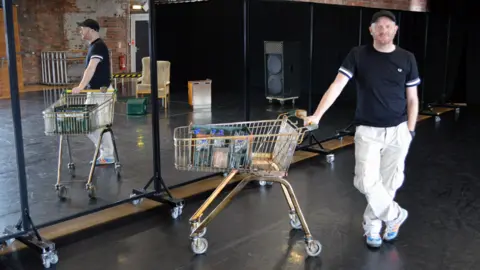 BBC
BBCIn the early 1990s, the illegal rave scene in Britain was on the rise and heavy industry was on the decline. Choreographer Gary Clarke connects the two in a new dance show.
Gary Clarke was too young to go to raves during the acid house explosion. So he borrowed his older brother's tapes and held his own mini-raves in his bedroom instead.
"I had a cassette player and rave music, so I used to go into my bedroom and just move my body and throw myself around," he recalls.
"To have music that was really driven and repetitive and slightly aggressive, it became a coping mechanism.
"That fuelled me to move and want to become a dancer. I didn't go to ballet when I was three. You don't do that if you're a boy from a mining village."
He has clearly never seen Billy Elliot.
But perhaps if Billy Elliott had listened to some rave tapes, that story would have been different.
Allow Google YouTube content?
Encouraged by a teacher who caught him raving solo in a school dance studio, Clarke, from Grimethorpe, South Yorkshire, channelled the energy of acid house as he pursued a career in contemporary dance.
He now runs his own dance company and has been looking back to the early 1990s during the research for his new show, Wasteland, which premiered in Doncaster on Wednesday.
That has involved watching hours of footage of raves on YouTube in an attempt to turn the spontaneous, drug-fuelled shapes into choreographed moves for professional dancers.
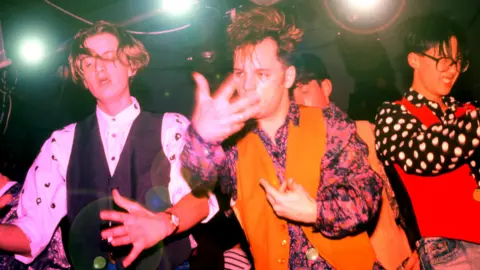 Peter J Walsh/Pymca/Shutterstock
Peter J Walsh/Pymca/Shutterstock"The rave culture is about not having control and being completely free - but you can't do that in a show and expect people to pay money to come and see that," Clarke says during rehearsals.
He studied revellers at the Hacienda and Fantazia, picking out moves and stringing them together to create what he describes as "organised chaos".
"It's been a really difficult process, trying to get this idea of lack of control while being completely in control."
Around the same time that ravers were losing their minds in fields and warehouses all over the country, elsewhere, coal mines were shutting, including in Grimethorpe.
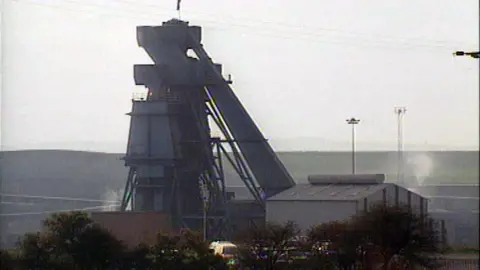
It closed in 1993 and was demolished the following year as Clarke and other horrified residents looked on.
"I remember the howling, the screaming," he says. "It was so heart-wrenching.
"You've got to remember the mining industry fuelled the village. We just knew that once that had gone, everything else would go. And it did."
In 1994, Grimethorpe was named the poorest village in the UK.
"Grimethorpe really started to struggle as a community and as a village. It was a really bleak time. Unemployment rose massively. Crime was at an all-time high. There was a lot of drug use in the village. The whole community really suffered. It became a wasteland."
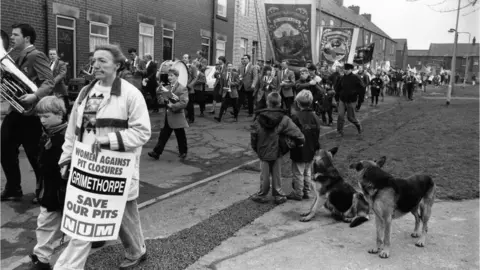 Getty Images
Getty ImagesClarke's last show Coal was set during the miner's strike of 1984/85 and won the UK Theatre Award for achievement in dance in 2016. Wasteland is the follow-up and is set a decade later.
His research also involved interviewing former miners and former ravers. "If you're going to make work about real life, you need to get out there and speak to people who have been exposed to it and experienced it," Clarke says. "It should feel authentic and real."
That has helped him tell a clear story, he adds. "It's very easy to understand.
"Contemporary dance can sometimes alienate people because of its approach, whereas I try to create quite a clear narrative so an audience can understand what's going on. A lot of that does come through our research."
After opening in Doncaster, Wasteland will tour the UK into 2020. At each venue, Clarke will recruit four local men - preferably with no previous stage experience - to appear in the show.
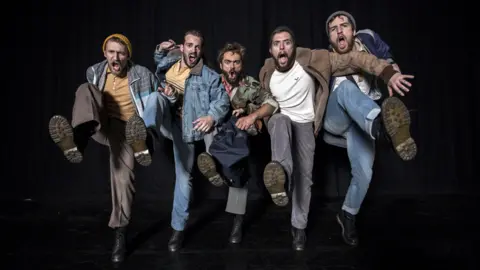 Joe Armitage
Joe ArmitageThey will sing mining hymns, representing ex-miners who lost their jobs. In Doncaster, two of the four will actually be former pit workers.
"Not only did the communities break, but a man's position and the male role in working class society in those villages also broke and crumbled," the choreographer explains.
"It really affected a lot of men, I think, when the pits closed. They didn't feel worthy any more."
The stories of the industrial workers dominate the first half, with the ravers featuring heavily in the second. Clarke believes there are strong reasons to connect the two in the show.
"It looks at how rave culture came out of the death of industrial Britain. They're so close together.
"The rave movement was a subculture that came out of oppression and came out of a very grey and grim reality, like punk did, or Motown soul or hip-hop did.
"These factories and warehouses and mills were now home to a new community. But rather than working, they were dancing and playing music.
"Rave culture provided an opportunity for young people to attempt to escape essentially what was a very bleak landscape."

Follow us on Facebook, on Twitter @BBCNewsEnts, or on Instagram at bbcnewsents. If you have a story suggestion email [email protected].
